Sinks & Faucets For Every Style
Complete your space with beautiful, thoughtfully designed fixtures.
We offer a wide selection of sinks and faucets to complement any style. With a variety of finishes, shapes, and designs, our collection makes it easy to find the perfect match for your space. Explore our range of accessories to enhance both function and beauty. Visit our showroom to find the perfect fit for your kitchen or bathroom
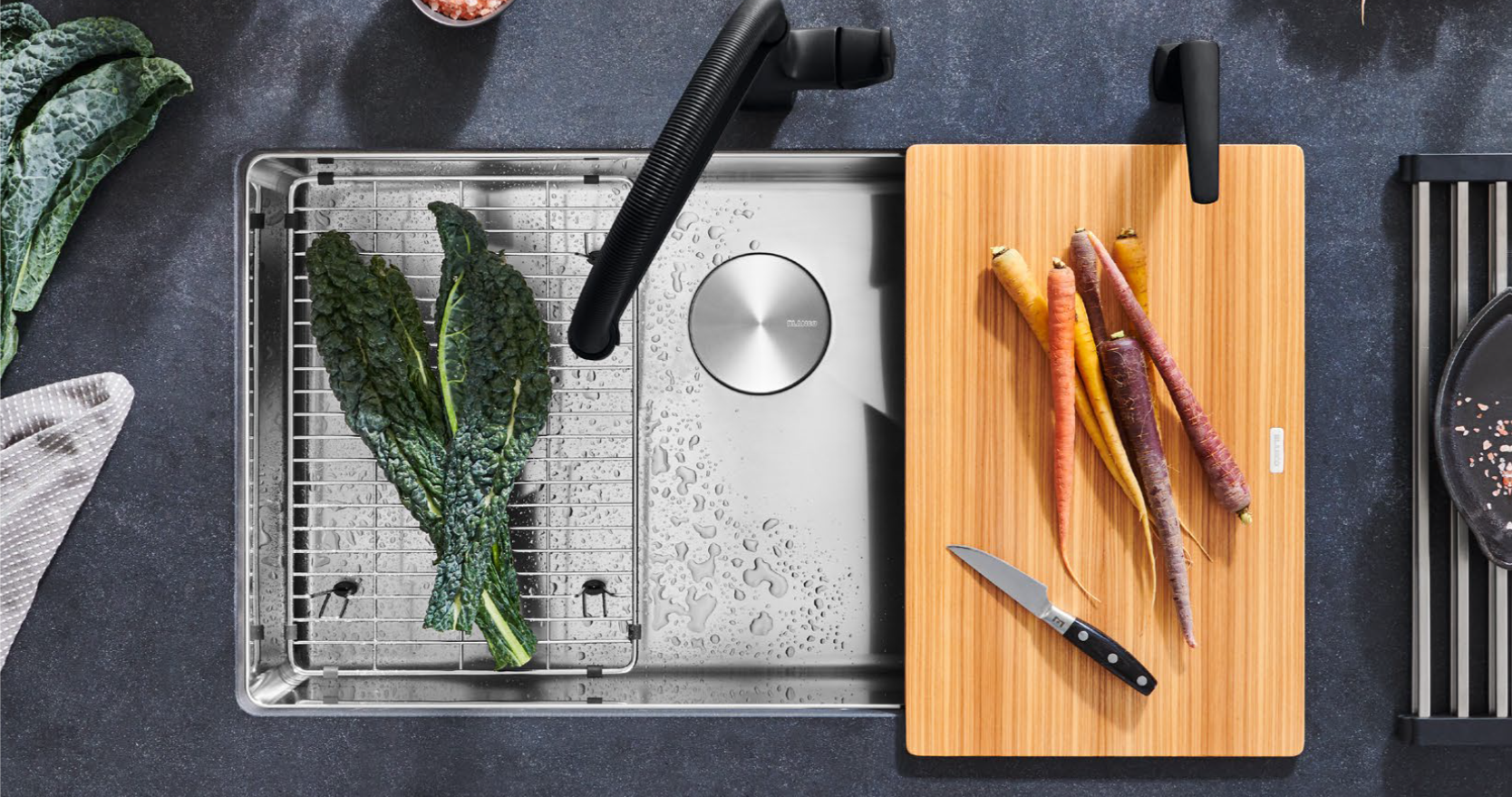

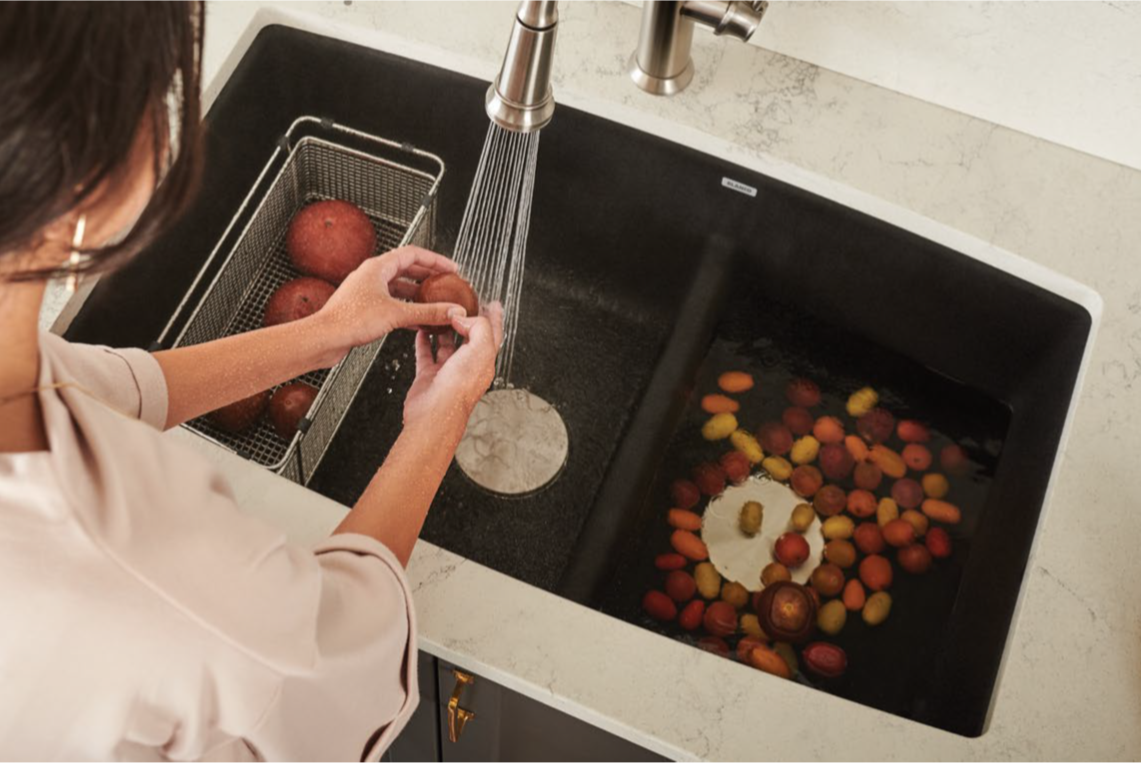
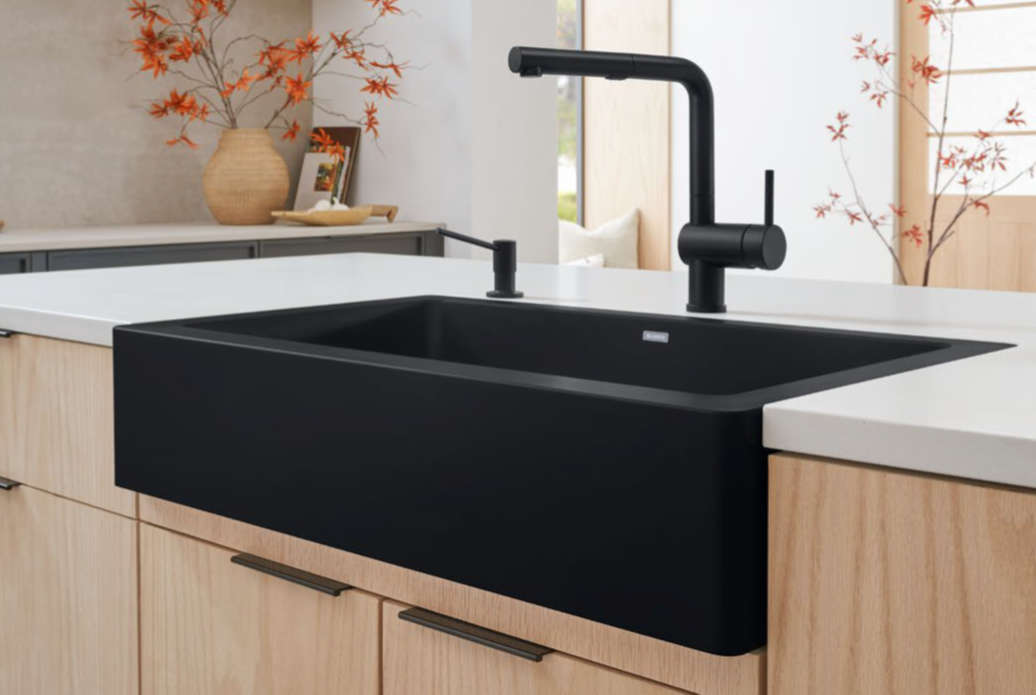
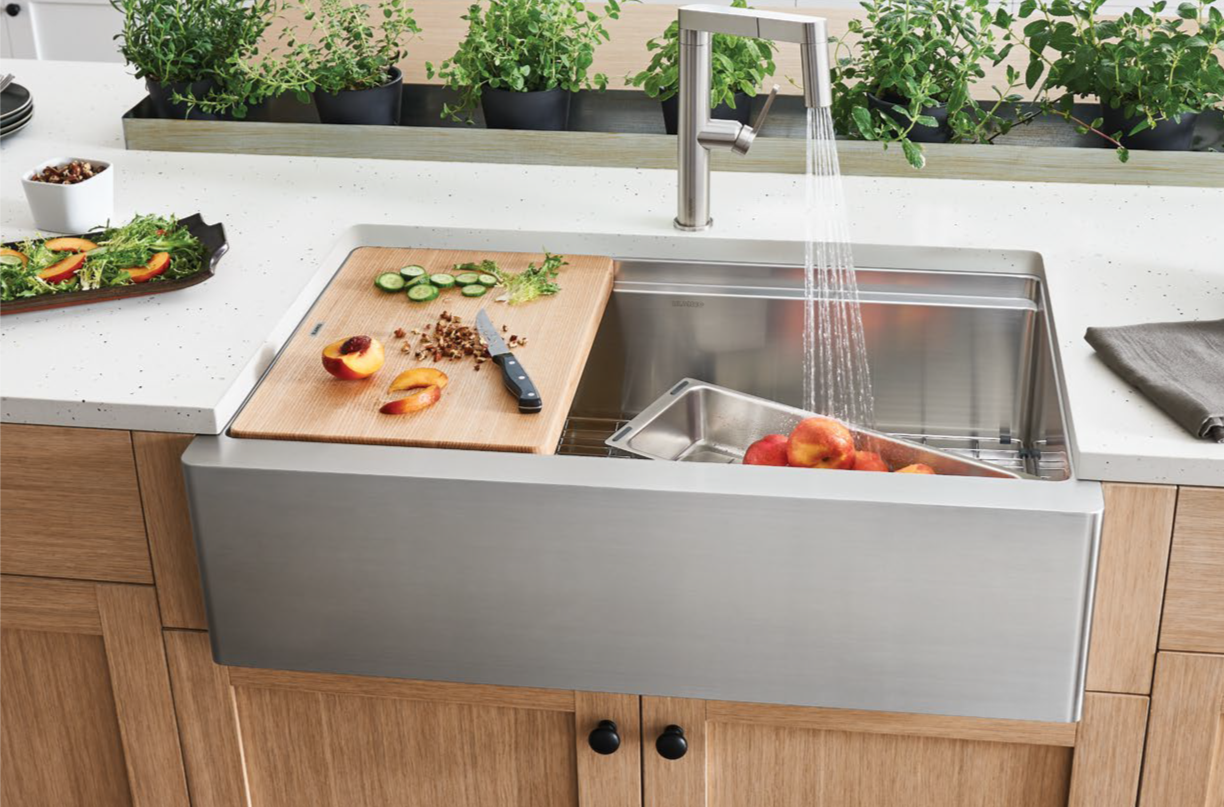


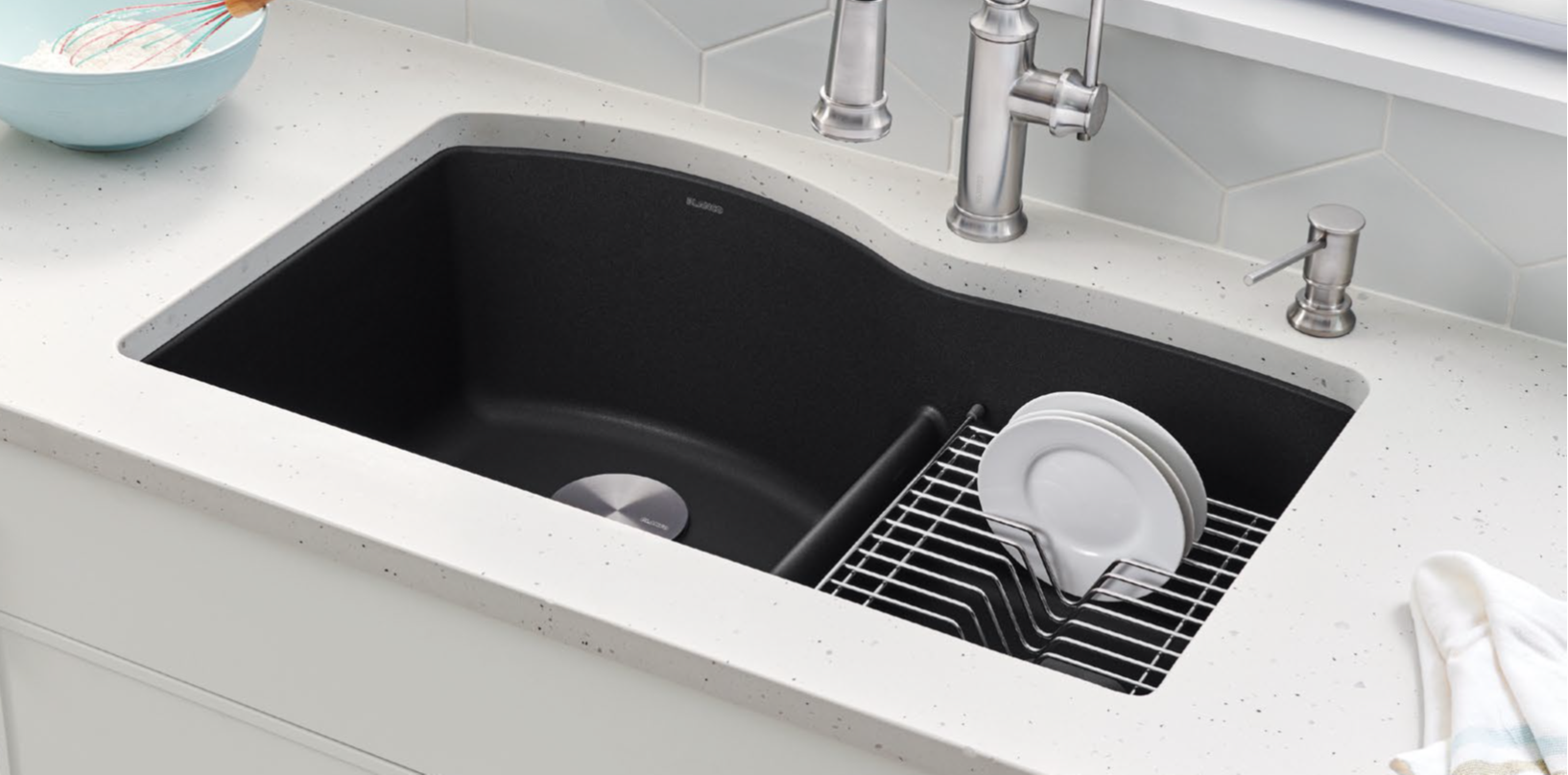

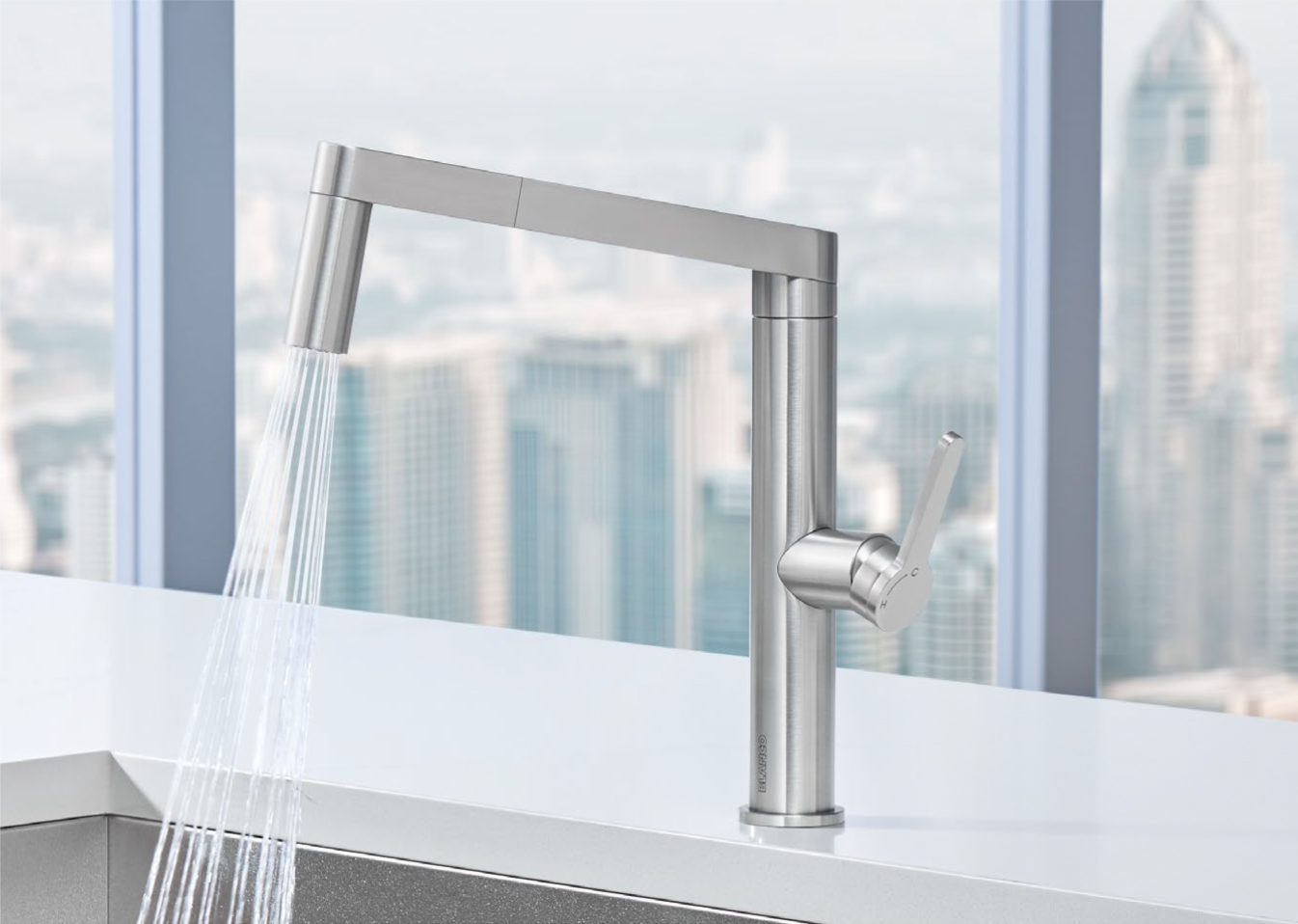

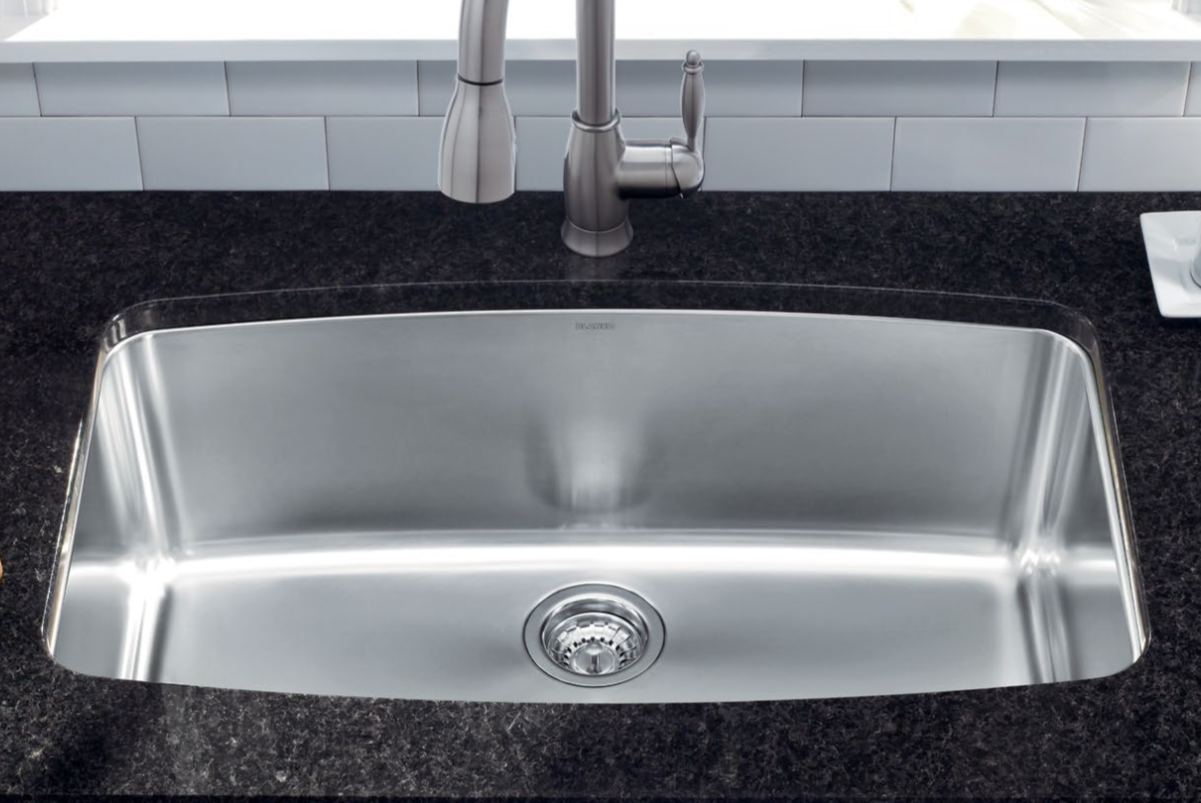
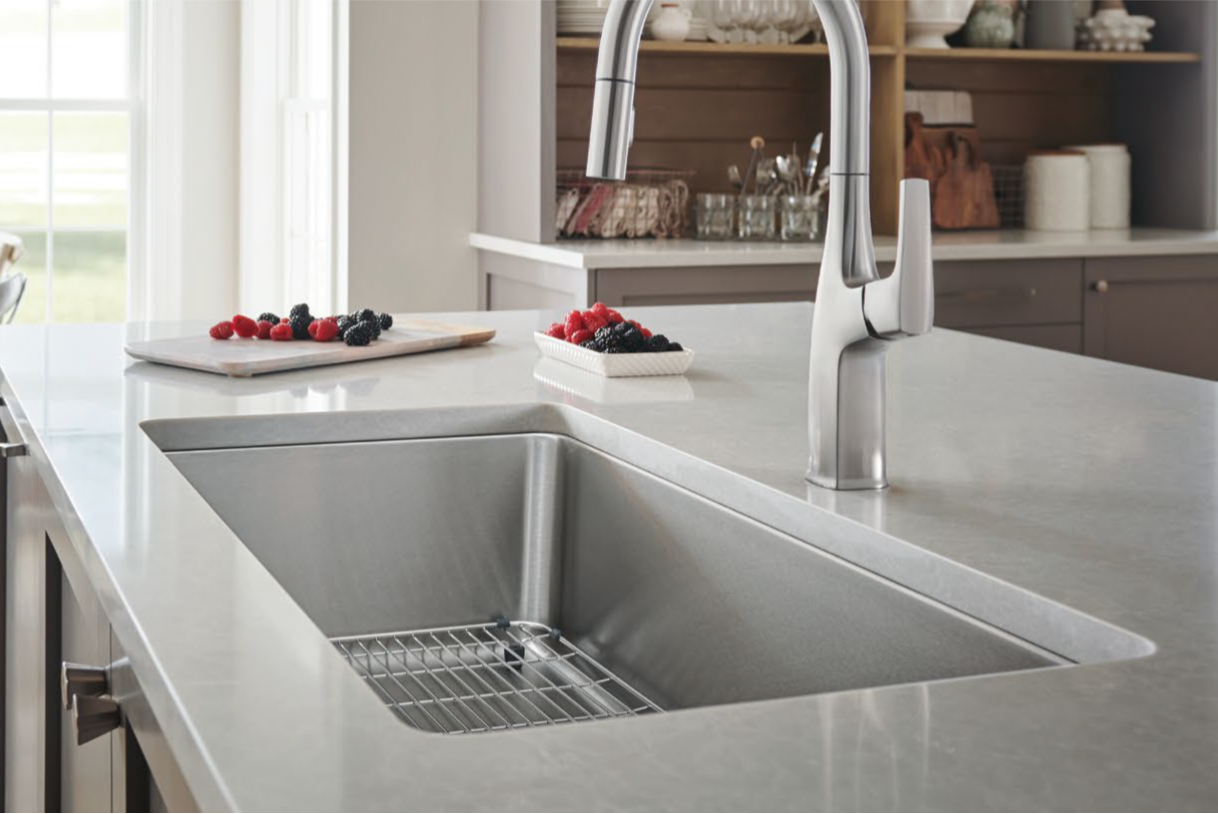
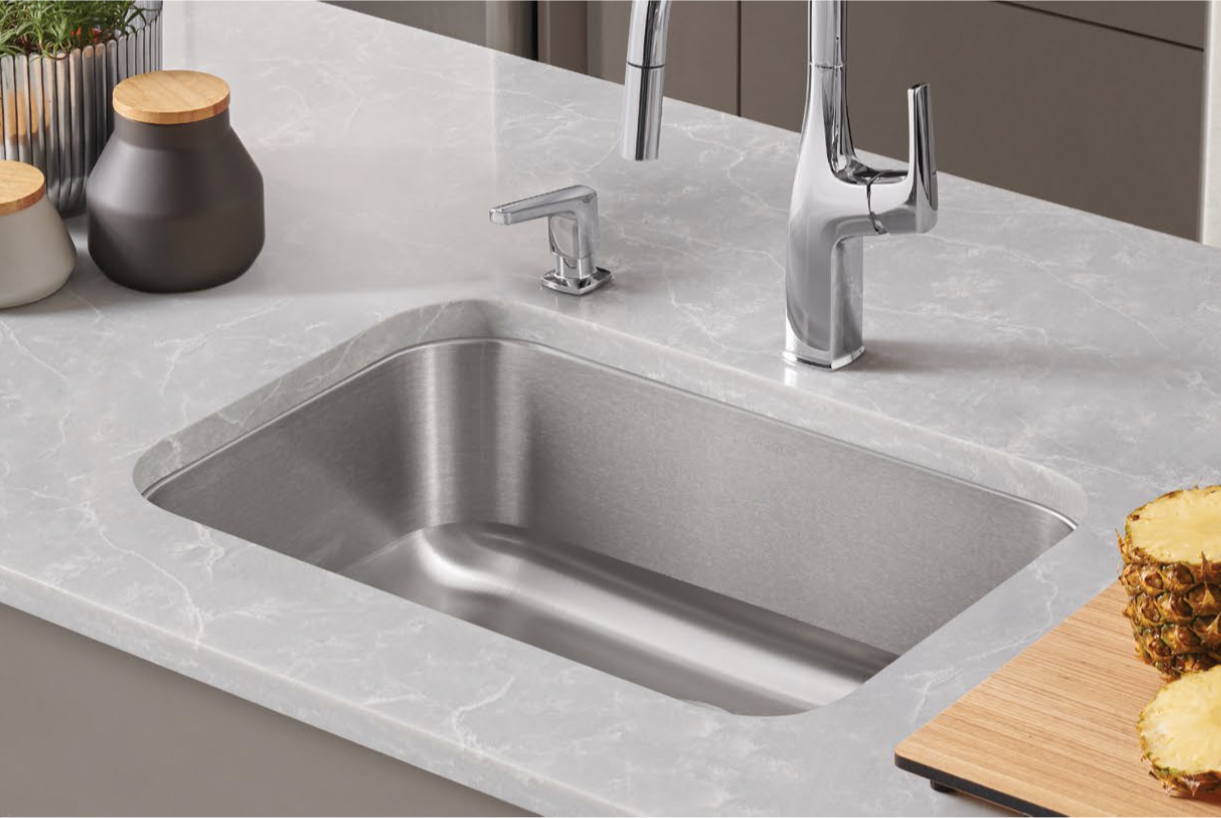
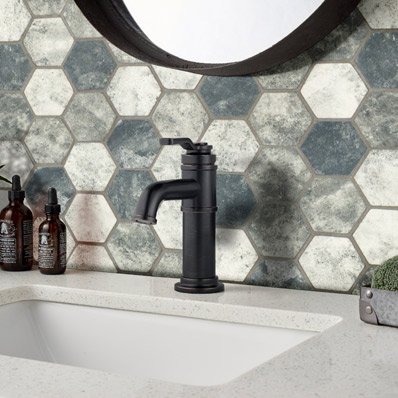
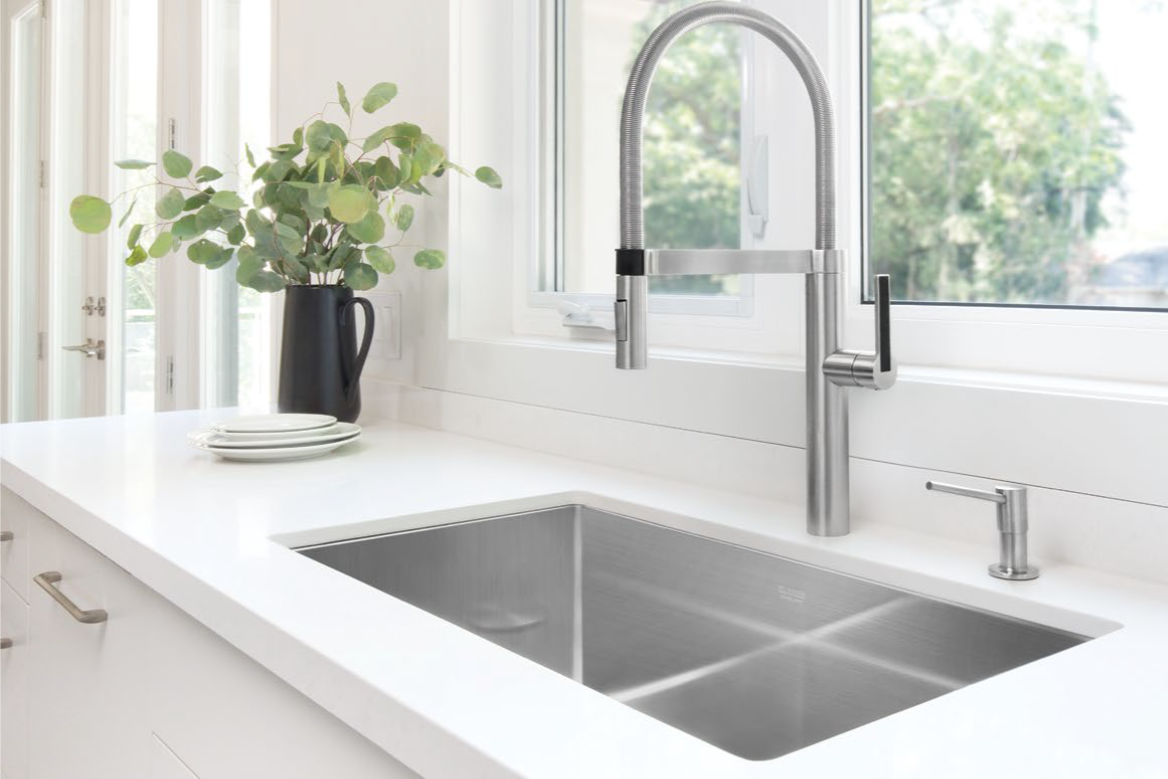

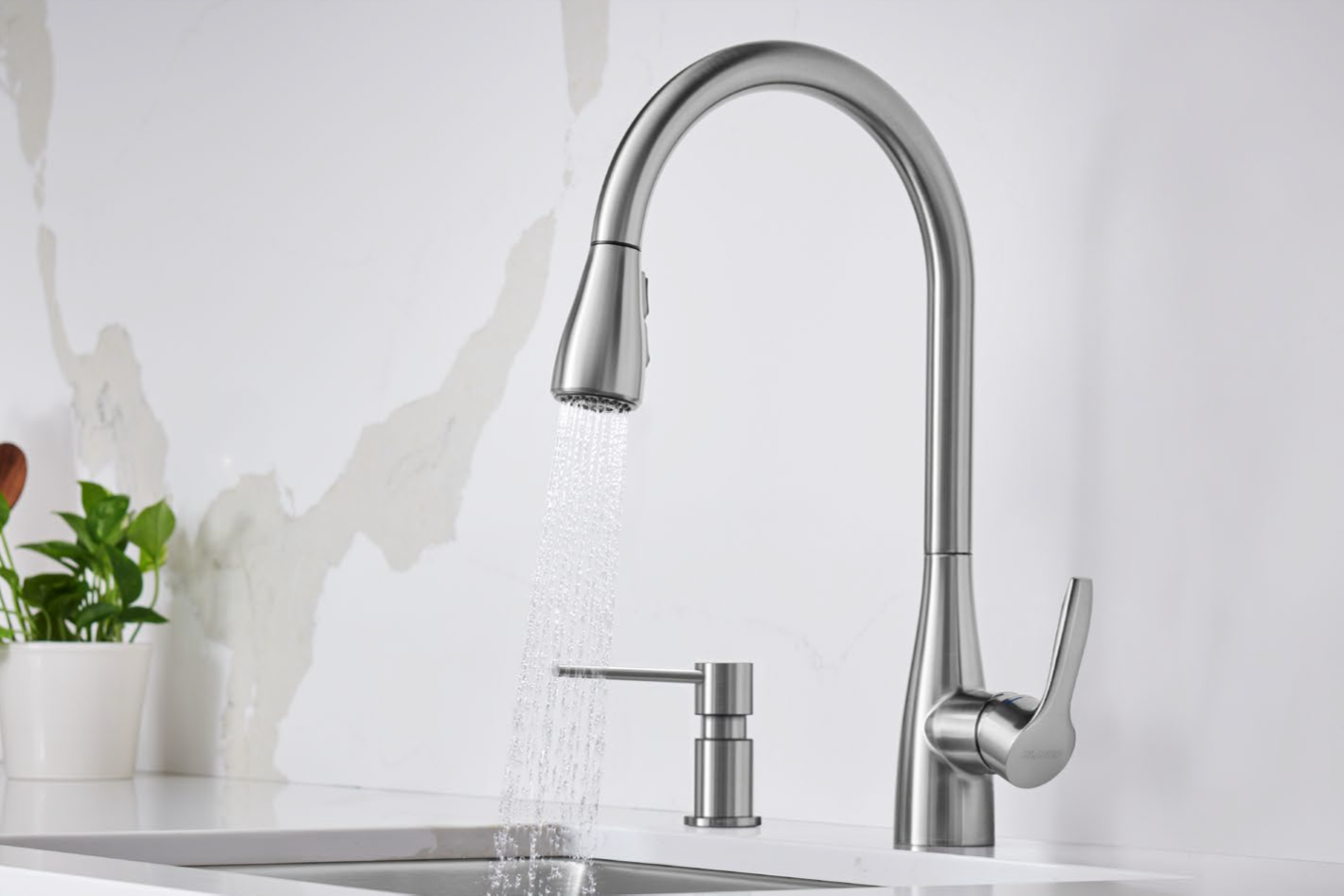
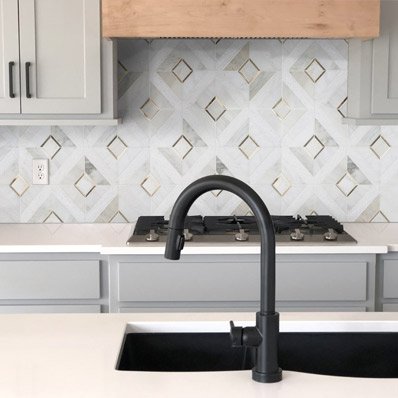
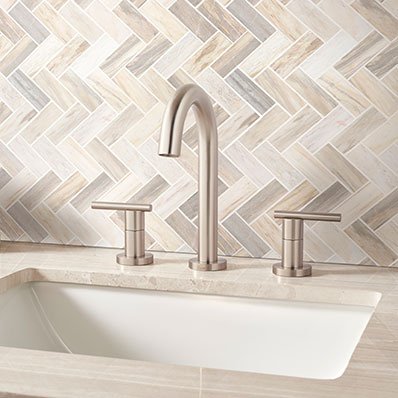

Your Path to a Stunning Remodel
Step 1
Find Your Match
Browse a range of styles, finishes, and designs from our selection of sinks and faucets. Perfectly match your needs, functionality, and aesthetic preferences.
Step 2
Confirm & Order
Our experts verify that your selections seamlessly fit into your space and align perfectly with your countertops and plumbing for optimal functionality.
Step 3
Install & Enjoy
Our team installs your fixtures with precision and care, while you enjoy the seamless functionality and style that your new sink or faucet provides your home.
Finish Your Space With Style
Sinks and faucets should do more than just function well, they should enhance your space. We offer a wide range of high-quality fixtures that stand up to daily use while elevating the design of your space. See your options in person and get expert recommendations tailored to your project by visiting our Rockford or Aurora showrooms today.

FAQs
-
Top-Mount (Drop-In) Sinks: The most common type, where the sink is dropped into a hole in the countertop and the edges rest on top.
Undermount Sinks: Attached beneath the countertop, creating a smooth, seamless transition from the countertop to the sink. Ideal for solid surfaces like granite or. quartz.
Farmhouse (Apron Front) Sinks: Characterized by a deep, wide basin and an exposed front panel. Often used for a rustic or country look.
Under-Counter Sinks: Similar to undermount, but with a smaller lip that sits just below the countertop for a modern finish.
Integrated Sinks: Made from the same material as the countertop (e.g., solid surface, concrete) for a seamless look.
-
Pedestal Sinks: Standalone sinks with a base or column, ideal for smaller bathrooms.
Vessel Sinks: Sits on top of the countertop like a bowl. They offer a modern, decorative touch.
Undermount Sinks: Installed below the countertop for a sleek, clean appearance.
Drop-In Sinks: Fit into a hole cut in the countertop, often with a visible rim around the edge.
Console Sinks: A combination of a pedestal and vanity, with open space beneath for a more airy look.
Wall-Mounted Sinks: Attached directly to the wall, saving floor space and providing a minimalist aesthetic.
-
Stainless Steel: Durable, easy to clean, and resistant to stains and rust. A popular choice for modern kitchens.
Cast Iron: Durable and heavy, with a porcelain enamel coating that provides a classic look. It's resistant to stains but can chip if hit hard.
Composite (Granite or Quartz): Made of natural stone and resin, these sinks are durable, scratch-resistant, and come in a variety of colors.
Fireclay: A heavy-duty ceramic that's resistant to stains and scratching. Often used in farmhouse-style sinks.
Copper: Offers a warm, rustic aesthetic and naturally resists bacteria and stains. It develops a patina over time.
-
Single-Handle Faucets: A faucet with one lever to control both water flow and temperature. Simple and convenient.
Double-Handle Faucets: Features separate controls for hot and cold water. Offers a more traditional look.
Pull-Out Faucets: The spout pulls out to provide more reach for rinsing dishes or filling containers.
Pull-Down Faucets: The spout can be pulled down into the sink for easier reach and flexibility.
Touchless Faucets: Operate with sensors that detect motion, turning on and off without needing to touch the faucet.
Wall-Mounted Faucets: Installed on the wall above the sink, leaving more countertop space and a modern, minimalist look.
Bridge Faucets: A traditional style that has separate hot and cold handles connected by a bridge. Often used in farmhouse-style kitchens.
-
Stainless Steel: Corrosion-resistant, durable, and easy to clean. A top choice for both modern and traditional kitchens.
Chrome: Offers a high-shine, sleek finish. It's affordable and works well with most décor styles but may show water spots.
Brushed Nickel: Offers a muted, matte finish that resists fingerprints and water spots. It's modern yet warm and versatile.
Oil-Rubbed Bronze: A darker, antique finish that resists corrosion and creates a classic, rustic look.
Brass: A luxurious and warm look that's often used in vintage or traditional designs.
Copper: Adds an elegant touch and can develop a unique patina over time. Popular in rustic or farmhouse designs.
-
Style and Finish: Choose a faucet style (modern, traditional, industrial) and finish (chrome, brushed nickel, matte black) that complements your overall décor.
Functionality: Consider features like pull-out or pull-down sprayers, touchless operation, and multi-function spray modes.
Mounting Type: Make sure the faucet matches your sink type (top-mount, undermount, or wall-mounted) and the number of holes required.
Height and Reach: Consider the height of the faucet and the reach of the spout, especially if you have a deep sink or use large pots.
Water Efficiency: Look for faucets with the WaterSense label, which ensures water efficiency and conservation without sacrificing performance.
-
Stainless Steel Sinks: Clean with mild soap and water or a vinegar solution. Avoid abrasive cleaners, as they can scratch the surface.
Cast Iron Sinks: Wipe down with a soft cloth. Use mild dish soap and a non-abrasive cleaner for stubborn stains.
Composite Sinks: Clean with a soft cloth and mild cleaner. Avoid harsh chemicals or abrasive scrubbers.
Faucets: Wipe with a microfiber cloth and use mild soap or a commercial faucet cleaner. Avoid abrasive sponges, as they can scratch the surface.
For hard water stains: Use a mixture of vinegar and water, or a commercially available descaling product to remove mineral buildup.
-
Consider the size of your countertop and the amount of space available for the sink. Standard kitchen sinks are 22" x 30", but larger sinks can be up to 33" or more.
If you have a small kitchen, an under-mount or farmhouse-style sink might be a better fit, as they offer more countertop space.
Double-basin sinks are useful if you need separate spaces for washing and rinsing, while single-basin sinks are great for large pots and dishes.
-
Faucet installation: Replacing or installing a new faucet is generally a manageable DIY task. Make sure to check the size of the faucet holes and follow the manufacturer's instructions.
Sink installation: Installing a new sink can be more complicated, especially if you're switching sink types (e.g., from a drop-in to an undermount sink). If you're not familiar with plumbing or if it requires altering the countertop, it's a good idea to hire a professional.
-
Regular Maintenance: Clean the faucet aerator periodically to prevent buildup of mineral deposits that can cause leaks.
Check for Loose Parts: Tighten any loose handles or connections, especially after installing a new faucet.
Replace Worn Parts: If the faucet starts to leak, the valve seats, washers, or O-rings may need replacing.
-
Clean the Aerator: Mineral deposits or debris can clog the aerator. Unscrew it and soak it in vinegar to clean it.
Check for Leaks: Leaks in the pipes or faucet connections can reduce pressure. Tighten any loose fittings.
Check the Water Supply Valve: Ensure the valve under the sink is fully open. If the issue persists, it could be due to a clogged pipe or an issue with your water supply.
-
Kitchen Sinks: Stainless steel sinks can last 15-30 years, while cast iron and composite sinks can last 20-50 years with proper care.
Bathroom Sinks: Depending on the material, bathroom sinks typically last 15-25 years.
Faucets: High-quality faucets can last 10-20 years or more, depending on usage and maintenance.
